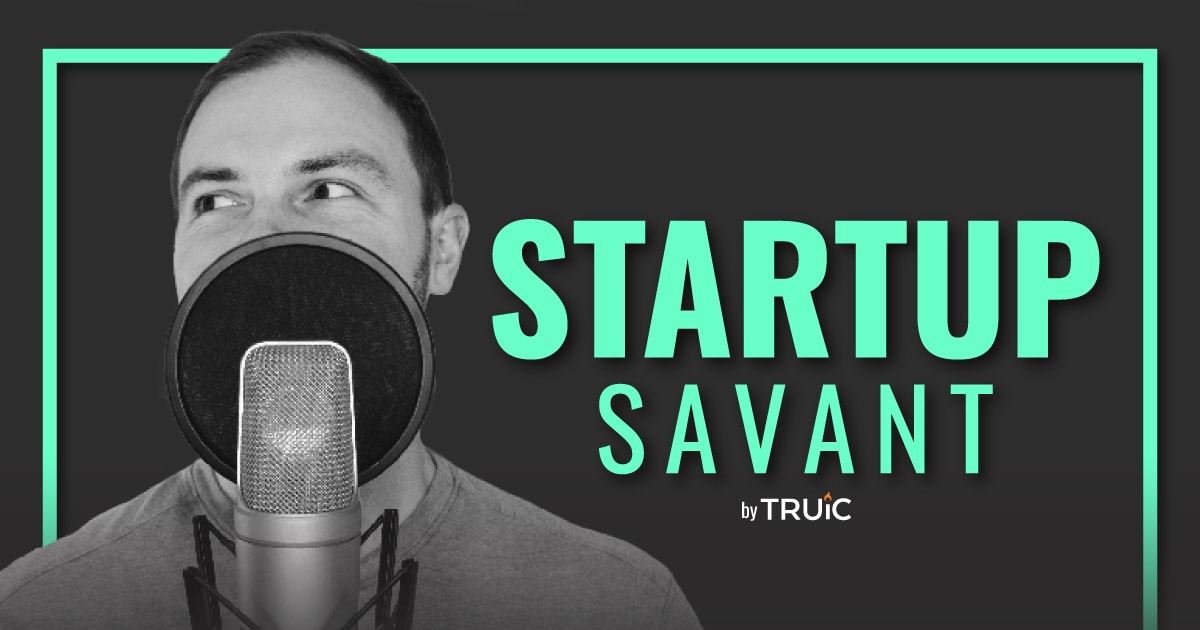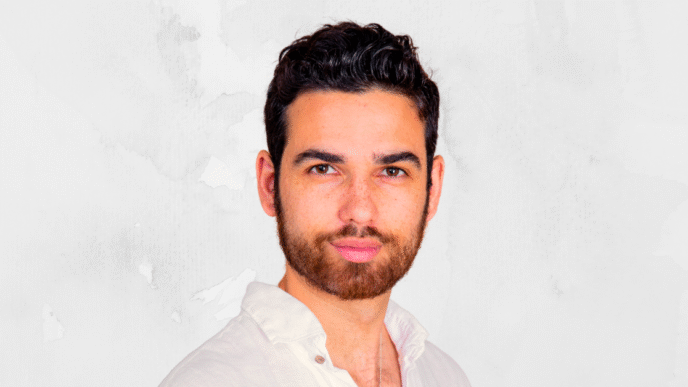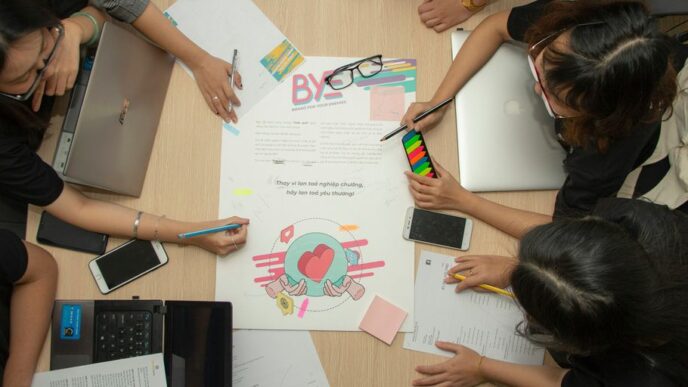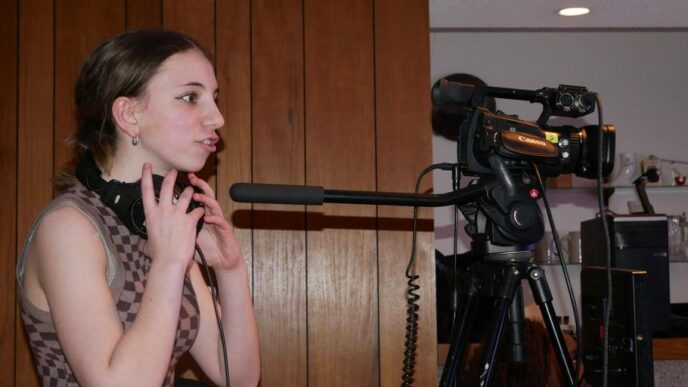This episode of Startup Savant features Jaideep Singh, the founder and CEO of FlyFin. He talks with the host, Ethan, about how his company can use AI to help freelancers prepare their taxes and even reduce the amount they owe.
What is FlyFin?
“FlyFin is the leading AI tax service that helps freelancers and self-employed people deal with their taxes. That’s the simple explanation.”
Can you tell us a little bit about the problem that you’re solving with FlyFin?
“Sure. Lots of us have simple tax returns because we have W-2 incomes and there is no complexity, don’t own a home and stuff like that, especially when you’re younger. It was pretty straightforward. I went on TurboTax, it took me 40 minutes, I was done. A huge segment of our population today is freelancing, is independently employed or self-employed and, when you do that then, suddenly, the tax return becomes really complicated because what you are is a small business and you need to understand what your income is, what your expenses are, what your net income is, and then pay taxes on the net income, not the gross income. A lot of people don’t know that, right? Even people like Uber drivers, people on TaskRabbit, freelance marketers, engineers, so on and so forth. There’s 70 million people involved in our freelance economy today just in the US alone. Think about it, that’s almost 40% of taxpayers.
I personally had this problem myself when we started. We all loathe taxes and hate taxes, there’s nothing unique about that, but I realized that, more often than not, I end up filing an extension and not even dealing with taxes in April even if it costs me something extra just because I don’t want to deal with that. I realized that the main problem was the two days that it takes me, a whole weekend, to pull down all my transactions from American Express, Capital One and B of A, then pull out my shoebox of receipts and try to put it together, all on a spreadsheet, to hand it off to my CPA in San Jose and have the privilege of paying her 1,500 bucks for filing the tax return.
As awesome as she is, I realized that, as an engineer, as a computer scientist, as a product person, as an entrepreneur, this problem is definitely a great AI ML problem, it can be automated and as much of it that can be automated would be a huge boon to taxpayers. As we started off, that was the pain point we were solving for. That’s what made me realize that this is really an interesting problem to solve.”
Did you really have a shoebox of receipts?
“Yeah, because where else do you store them? I know it’s a silly thing, but that’s a nice, cheap big box.”
You said that there were 70 million people in this contractor market. What percentage of those people do you think are filing their own taxes without using any sort of fancy software or going through a CPA, and are those people generally overpaying their tax bill?
“Last year, we did an internal study, and of the users that we were getting, or tax filers we were getting…. This is not a review of the whole market, this is a review of our customers. We found that on average, they were overpaying $3,700 per person, which is a lot of money. It was higher than what I had expected. That’s not the industry average because of the 70 million, there’s tens of millions of people, maybe 10 million people or so, who make very little freelance income, so it doesn’t really change the equation for them. They’re only making 500 bucks or 600 bucks, you don’t have to report it. Above 600 bucks, you have to report it. They don’t matter because it’s really not a big problem for them. Then, there’s maybe 10 million or so people who have their own CPAs. They’re entrepreneurs. They’re fully self-employed.
The 50 million people in between … I think it’s a really tough problem for them because many of them don’t want to go to a CPA because it costs a lot of money, but do. Some of them try to file themselves, but they don’t know what they’re doing so they just take their total 1099 income, use that as their income and something like TurboTax [inaudible] and then they end up overpaying. I’m actually surprised by how many people actually blow off their taxes in this space also. Obviously, they’ll get into trouble later. Many of them are younger, but once a problem becomes so acute, the mind tends to tune it out. That’s the nutshell.
.… If you’re paying more taxes, you’re making more money. That is true for salaried people. However, there are some attractive things about being a freelancer, despite the pain of paying taxes five times a year or dealing with it five times a year, four for a quarter and one for your annual: the thing is that you can actually write off a lot of things. As a freelancer, I can write up this home office space that I’m talking from. I can write off the computer, the monitor, my iPhone, my AirPods, a lot of stuff. There’s millions and millions of items that can potentially be written off. If you do it right and if you use a smart system that can help you do it all, like in our case, it only takes 5% of the effort that it would’ve taken you last year.
AI does two things. It solves a huge time thing because you link your accounts, it’s going through all your statements and pulling out all the transactions. It does it really fast and you only have to deal with a small bit of it of reviewing which are the possible deductions. Secondly, because you’re going through every expense, you don’t leave a single penny on the table. There’s no chance of you forgetting or those receipts in that shoebox turning … where the ink fades and you can’t even read it anymore [inaudible] … All that’s out of the window. The flip side of this thing is, if you use a tool like FlyFin, you can save a lot of money and pay very little taxes. There are people making like 50-60K a year of self-employed income, of freelance income, paying almost no taxes. That’s the chip.”
Tell us a little bit more about the process. What is the AI and machine learning actually doing, and what is the process that the user will follow through when they’re using FlyFin?
“It’s actually really simple. There’s only a few key steps in this whole thing and the whole process of using FlyFin. First of all, you connect your statements by linking your financial institutions. We do this through Plaid, which almost every American uses, so it’s highly secure and it’s just read-only information. We just get the transaction information, that’s it, but by doing that, two things happen once you connect everything. A, we get all the transactions. B, you can take that shoebox of receipts and throw it in the garbage can. You don’t need receipts anymore because that digital record is a receipt. There’s no difference. Just by doing that one thing that takes a minute, you’ve saved yourself a ton of time.
Secondly, as I was explaining earlier, AI rummages through everything, we have a huge machine learning system that is learning across the population, but is also learning per user. What that system does is it takes out a whole bunch of expenses that are not really going to be possible deductions. It presents a large number of expenses to you that are possible deductions right out of the box, but it’s organized and grouped them in very clever ways. For example, Netflix … if you’re an Uber driver, you can probably deduct Netflix because you’re running it in your cab or in your car. Ethan, you here probably cannot deduct Netflix. Those kinds of things. You can make one decision on 12 monthly expenses, it’ll learn everything and you can deal with it. What normally takes people 15, 20 hours can be dealt with in 20 minutes of review. You link your statements, AI does a thing, then you review.
We’re not just an AI only solution. AI has limits. The last bit is we have CPAs, we have an on staff CPA team that’ll file the taxes for you. It’s a team of tax preparers, enrolled agents with the IRS, CPAs that deal with the tax filing for you. It’s up to you. You can pick a basic plan, where you download everything to a spreadsheet where you get IRS categorized deductions and you can take it to your favorite CPA or, if you’re super savvy in taxes, file it yourself, or you can go with our standard plan, which includes the tax filing for federal and state. If you’re a bit more sophisticated, where you have an LLC or an S corp, then you can take our premium plan as well.
These are very affordable. The basic plan’s less than a hundred bucks, the tax filing plan with the CPA is just 200 bucks and the one with LLCs and S corps is just 350 bucks. It’s a combination of really using technology to solve a problem that’s real pain for you, but doing a high-quality job. That’s using the best of humans and the best of technology married together in a solution, in a tax service.
Is the AI taking over that part of the job? If I were using FlyFin, would I still need to go in and do anything manually?
“Yes, you would, because there’s no way AI is going to know that the Starbucks you went to was for a business meeting or you were just grabbing a breakfast sausage and coffee.”
Well, hopefully, people are keeping their finances separate as well, because if you are paying all your personal bills out of your business account or vice versa, you’re going to have a bad time. Don’t do that.
“That’s a great point. Some people have the discipline of doing it separately, but what we’ve seen is even people who do it separately, it’s all mixed. What ends up happening is a lot of people have these Amex cards for their business accounts. You go to a place and they say, ‘Sorry, we don’t take Amex,’ so you’re going to put it on your Visa card. You don’t have a choice. Sometimes, you just forget or you hit your credit limit, [inaudible] different cards. The thing [inaudible] … if you have the discipline to do it separately, it’s super, super fast. If you have it all mixed, and we assume it’s mixed, your personal and your business expenses, you still have to do this review, but this is what I was talking about: AI will find as much as possible and keep learning over time.
The review you do is not a spreadsheet-type review, or a Xero- or a QuickBooks-type review, which is an accounting software. The system groups up cards in the UI in your mobile app. They’re like Tinder cards. You can see a bunch of Uber expenses and you can just swipe accept, accept, accept, reject, or you can look at it in a list view form, which is more like a Xero-type implementation that you were talking about, But we find that people flip through these cards, it’s super easy, it’s fun to do and it’s not that arduous because it’s coming up really simply and you’re only doing a subset of the whole thing. You don’t have to go through every expense. That’s why it just flies by so quickly. We notice that people take years … in this past tax season, we saw people did it with years’ worth of expenses, with 2,500 to 3,000 expenses, transactions from different financial institutions, and they blew through it in 20, 25 minutes in terms of the review piece of it.
That was for once a year, and our system’s ongoing. We send you a weekly e-mailer and a notification in the app. It just takes five seconds. You can see [if the is AI doing everything correctly. Then I don’t need to do anything except [maybe] change a few things around because machines will always make some errors, especially in the absence of perfect information.”
If I use FlyFin throughout the year, is it strictly for taxes, or is this something that’s going to be able to spit out a profit and loss sheet and a balance sheet as well?
“That’s a great question. You’re a sophisticated user and, if you use Xero, then you’re expecting accounting software-type output. We don’t do that yet. We are focusing mostly on the tax piece of it, the deductions and the filing, but one of the things we’re going to be announcing soon, and I can talk about it now, is the income piece of it. That does create a P&L for you. We are launching that. It’s not so much to print out a P&L statement in a spreadsheet, it’s more for you to review, view it and consume the information. We’re very much a consumer application, not a B2B application. It’s meant for people to make some actionable decisions and use it the least, not the most.”
Let’s talk a little bit about your entrepreneurial past before FlyFin. You started two companies, Spock and seeDoc. Could you give us a little bit of primer on each of those companies?
“Spock was my first company as an entrepreneur. Just to give you maybe a 20-second backdrop, I am an engineer, I have a BS and MS and computer science, and I’ve worked many years as an engineer and a product manager, but I’m also an MBA. I went to the University of Arizona in Tucson to study, but I also got my MBA at the Wharton School. Post that, did early-stage venture capital for a few years. I’ve got this experience of investing in early-stage companies and my first company actually was funded by the VC fund that I worked at.
That was a timeframe when Google had gone public and there was a lot of opportunity in the vertical search space. I realized that searching for people, a people search, was one of the largest category of searches on Google. It was almost 25-30% at the time. We built a search engine to search for people and it was a hard technology problem because it was an AI NLP problem. I’m talking about the 2006, ’07, ’08 era, prior to when lots of tools were available for large-scale AI ML. It was a hard, large-scale problem. We hired one of the smartest teams in the industry in terms of PhDs in AI and ML and a strong engineering product team in a space where there were maybe 100 companies in that space.
We raised venture capital and we soon became the number one company in that space because, within [less than] three years, we had indexed over a billion people off the Internet. We had the largest index of people and information indexed about people and, in that duration, we were up to 30, 35 million monthly unique visitors and growing fast. That was the first company that I started. That was Spock. The reason we named it Spock was it was like that Star Trek character with pointy ears: it was half man, half machine. Just as an engineer, I’ve always believed that AI and ML can solve a lot of large-scale problems, but you always need that human intelligence to make things just right.”
Tell us just a little bit about seeDoc
“seeDoc was a telemedicine company. Spock was a company that started in the Bay Area, seeDoc was a company I started in India. That was a telemedicine play, like Teladoc for India. The quality of medicine in India is not as pervasive as it is in the United States. There’s fewer doctors per person and stuff like that. That’s what that company aimed to achieve.”
What do you feel as though was the greatest impact of those two businesses on the way that you operate FlyFin?
“I would say putting things in two buckets. One is just understanding what it takes to succeed to build a killer product. My background is software. Any software company, you need a really great software product to start with before you even have a chance but, in order to build this great software product, you need a great team. You cannot do it with just average people and with an average effort because every space is competitive. There’s alternatives out there and, if a product doesn’t work real well for people, they’ll never come back and use it again and they’ll never say anything good about it.
I would distill these two things down as our main takeaways about building a company and I would layer on a third thing, which I guess most people know, but it’s still worth mentioning: in order to get from a great team to a great product to a great business, it takes a lot of hard work. You have to work harder than anyone else out there, as a team and as an individual. I think those are some of my learnings that are brought into FlyFin based on my prior experiences.”
What’s the mechanism that you run the idea through and see what comes out the other side?
“I think that’s a great question. It took me two years to vet FlyFin. I really wanted to take my time and I did apply a very stringent process to it. This is my process. By the way, there is no right path. There are people who just had an idea, executed it and turned out to be great companies, but my process really has been to look at four or five things. First, is this a problem that I personally connect with? Do I feel the pain in a certain software area or any kind of service that could be changed with software? Friends give you ideas, people pitch you ideas because I’ve been a VC as well. If I don’t really get it myself as much, cannot viscerally feel it, I’m not going to pick it, even if it sounds to be a great business opportunity. That’s the number one thing is picking an idea, a pain point, that you understand and can associate with.
The second thing that I applied a lot of rigor on was, is this market really going to be big or not? That’s what excites me. There’s lots of businesses to be built. There are two-person businesses that work great, there’s 20-person businesses that work great and then there’s Google, Facebook, and stuff like that. That’s the thing that has always excited me. I spent a lot of rigor to figure out the actual market size. That’s called a TAM. It’s very easy to multiply two numbers, get a really big number and get excited about it, but that’s usually incorrect. There’s only usually a sliver of the market. For us right now, it’s the freelancer market, it’s not all of tax. That was the second filter that I applied and it takes, I think, a fair amount of research to figure out, what is that TAM?
The third thing that matters to me is more … The first thing I talked about was a consumer problem, the second thing is a business problem. The third thing that’s really important to me as an engineer is a technology problem that is not too easy to solve and not too hard. Spock, our first company, I think we tackled a problem that was really, really hard. One of my lessons was that it was too hard a problem to solve. The company did well, we did fine and we did well and everything, but it was excruciating. Having said that, I don’t want something too light, either. In picking FlyFin, I realized in doing this, we can build a lot of intellectual property and get the brightest people in the world to work on it to create that intellectual property. That’s the third thing.
The fourth thing to me, and this is something I’ve learned just by doing, is to get investors and talk about them very early on in the process. If you think one, two and three are right but investors don’t get it, as much as you may want to do it and it still may make a lot of sense, it’ll be hard to raise capital. Without capital, you ain’t going anywhere. Those are the four things that I looked at very carefully. That’s my process. I do it in a spreadsheet. It’s a kind of scuttlebutt, but not really. I’m pretty organized with my documentation, Google Docs, slides, spreadsheets and quantifying everything.
Once you do that, then what ends up happening is never clear-cut. There’s a few ideas. Which one do you pick? That … it never comes out of a spreadsheet ever. It’s an emotional decision. You want to buy a high-performance car that corners really well, you build a whole spreadsheet in terms of what’s the best car, you go with your girlfriend and she says, ‘Hey, why don’t you buy this red car, because that’s cool?’ You end up buying the red car, which had nothing to do with your spreadsheet.
Most decisions tend to be emotional at the end of the day, not just logical, but I think having a combination of that analytics and then going with your gut feel, which is what I’m putting in the emotional bucket, is how you’ll arrive at the right decision.”
Have you had business ideas that have been marked ‘yes’ in all of those four areas but that you just had some sort of internal feeling where you’re like, ‘I just don’t think that that’s the one’?
“Yes, and I’ve had that multiple times. Most recently, a year before starting FlyFin, I had a term sheet for an idea from an investor who loved the idea and had my advisors who loved the idea. It made logical sense in the spreadsheet but, at the end of the day, I didn’t pull the trigger. It just didn’t feel right. I didn’t want to spend the next few years doing this to find out that … and I wasn’t that excited when I started. That does happen. I think it’s a function of your personality and also experience. Perhaps earlier in my career I would’ve gone for it because that would’ve been the easiest path to take.”
Who were you calling and where did you find them?
“You go for the lowest-hanging fruit, your buddies. You first call your buddies. Soon, you find out that you run out of them. Then, you go to your classmates from different institutions, whether it’s high school, college or wherever, or coworkers where you may have worked before. That’s a good way to do it because they’ll pick up the phone.
I think the beautiful thing about the stage of the development of the internet today is you don’t need to do that. You don’t need to be Glengarry Glen Ross [inaudible] people. There are great platforms like user interviews and just other platforms like that, where you pay someone 50 bucks, 100 bucks and you pay the platform. These are people who have opted in to be interviewed. They put their profession, what they do and everything. You have a platform where you can reach out and talk to people.
We used all our different channels. It wasn’t just me, it was a team of people. We all did it. The engineers did it, the product managers did it, I did it, my co-founder, Sachin, did it. We all hustled. It was important to inject that hustle at the beginning in everyone because that’s what it takes to get ahead.”
What was that platform that you used?
“User Interviews. It’s called User Interviews. That’s a great platform. That’s how we got to over 100. I think we probably got to 150, 200 people like that, over many, many months. It wasn’t just conversations. We actually did our designs of the application in Figma. It was just … think of it as a Photoshop type of design. Made it interactive, put it in front of people and said, “Go to your phone, we’ll send you the link on your phone, open it up.” It looked like an app, they would click next and you could see where they’re getting confused, where the delight points so, even though they can’t say it, you could see when someone’s nodding, not asking questions, they’re getting it. That’s how we got feedback and got the ideas of how to make this application interesting. The AI is a completely different technology set, but it’s subservient to the consumer application.”
You used Figma to build a working mock-up that users could actually touch, feel, and operate through. Do you think that this Figma is something that [other people] could figure out to build out a working model?
“Yes, it totally is doable and, if you can’t do it, you should not build that product. You’re not qualified.
Tell us how you’re getting people now.
“We’re using all the digital channels available to grow a company, but I’m going to point out one thing that’s very relevant but may be useful to other entrepreneurs: one of the things we realize is that there is no strong community for freelancer finances and certainly taxes. One of the things … if you go to Instagram and search for FlyFin, you’ll find a community approaching 50,000 people where people talk about the tax problems they have, other people answer. FlyFin ends up answering a lot of those questions [inaudible] CPAs … we ask our CPAs to go answer those questions.
There’s so much interesting stuff in the tax realm. There’s someone who’s a content creator who just posted that she wrote off her honeymoon to … I forget which place, I think it was Hawaii or something like that, partly because she was broadcasting it as a content creator. If that’s what you’re doing then that’s your job. It was primarily her job. Then, that is a legit write-off. Not everyone can do that. There’s all these interesting situations and people need help. CPAs will only give you one type of help. Learning from other people in the community is a very powerful thing, but that also turns out to be a good customer acquisition tool.”
What is the one piece of advice that you would give to early-stage entrepreneurs?
“I think the one piece of advice I’d give is make sure you have the right personality fit for entrepreneurship. I tend to be a pretty optimistic and positive person, and I didn’t even know that about myself when I started. I was, I think, pretty dumb when I started but, as I have worked for many years as an entrepreneur and helped other entrepreneurs get started, I find that it’s not just IQ and hard work. Those are less important. They’re very important, but what’s most important is you’re going to go through a lot of knocks and you wake up every morning saying, ‘No problem and that was [inaudible] I’m going to do it again.’ Eventually, you’ll start knocking down those dominoes, but you’re going to take a lot of hits. These are emotional hits. Some people just can’t sleep, can’t deal with stress or unknowns. If you’re super smart and have struggled with that stuff, do not be an entrepreneur. Not at all. That’s the main piece of advice I’d give.”
Where can people connect with you online and how can our listeners support FlyFin?
“There are multiple avenues. They can connect with me on LinkedIn, but you just type Jaideep Singh and FlyFin, and I’m right there. Of course, if they’re freelancing and there’s a product for them, they should certainly use the product. The best place to connect with the company is on our Instagram profile. Just type FlyFin on Instagram and you’ll see it. There’s tons of great content, tons of ways to participate and engage.”










